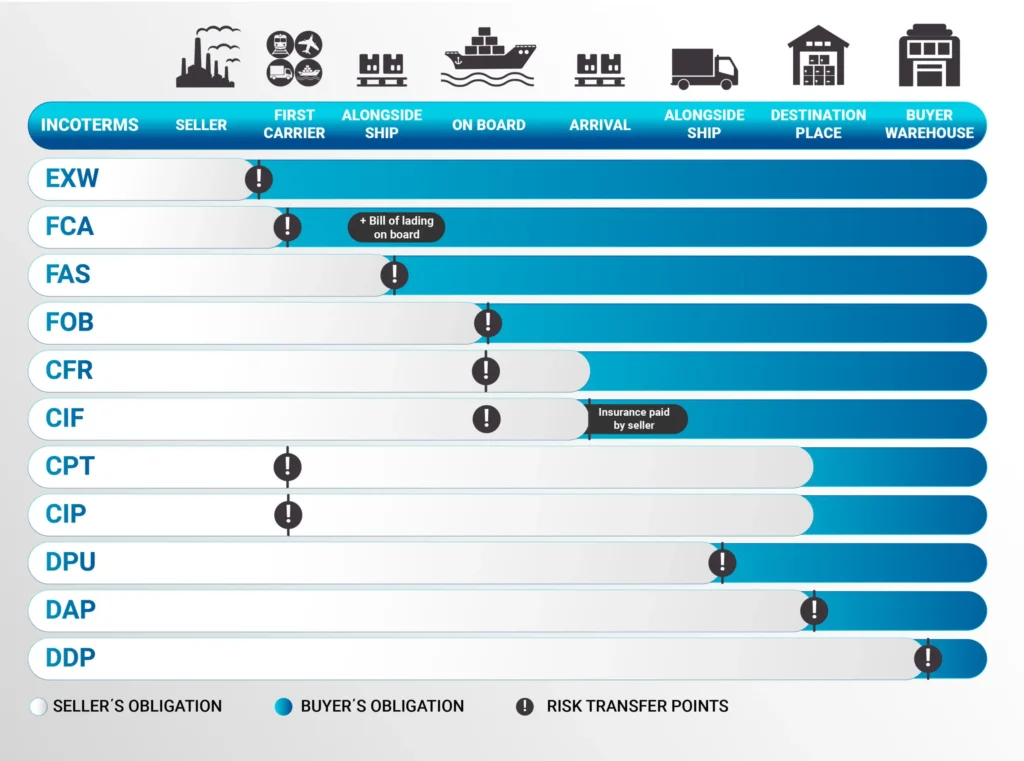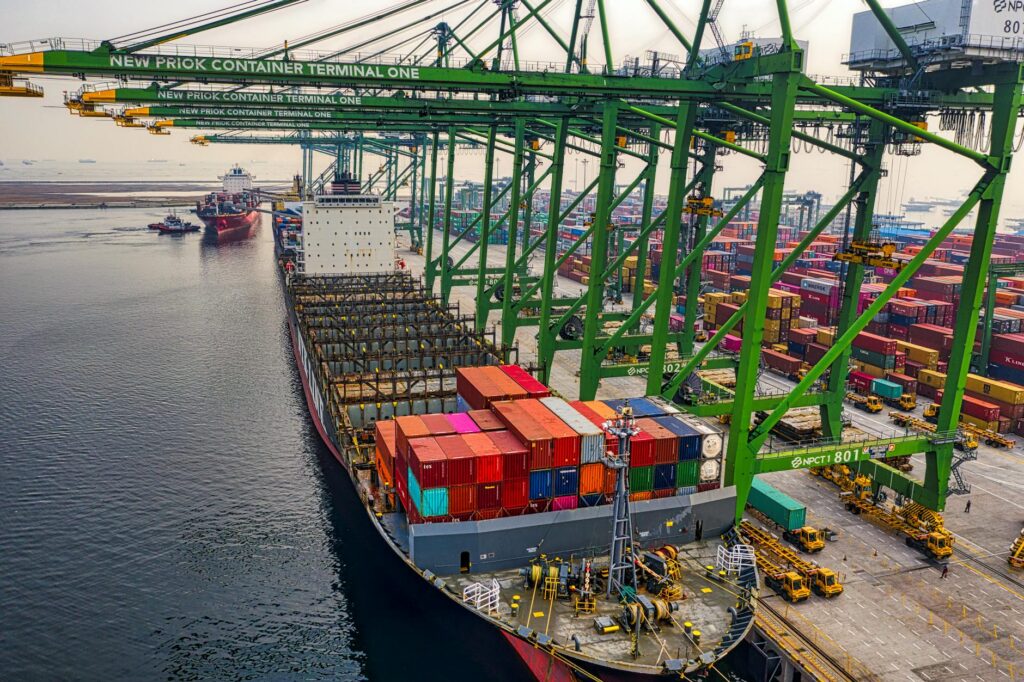The steel industry is the backbone of construction, infrastructure, and manufacturing. If you’re in the steel import business, you know how crucial it is to maintain a resilient supply chain. However, market fluctuations, transportation issues, and geopolitical factors can disrupt your supply chain in an instant.
The key to long-term success lies in building a resilient supply chain—one that can withstand uncertainties and keep your operations running smoothly. Whether you are a contractor, steel importer, or wholesaler, strengthening your supply network ensures you always have the right materials at the right time.
How do you create a supply chain that is strong enough to handle disruptions yet flexible enough to adapt? Let’s break it down step by step.
Key Steps to Create a Strong Supply Network

Establish Trustworthy Supplier Relationships
Your supply chain is only as strong as the suppliers you work with. A single unreliable supplier can cause massive delays, increase costs, and affect your entire business. You need to vet your suppliers carefully to ensure they can deliver quality materials consistently.
Look beyond just pricing—evaluate their reliability, production capacity, and ability to meet deadlines. Request references, check past performance, and consider working with suppliers who have contingency plans in place. Strong supplier relationships create a foundation of trust, ensuring that your business can thrive even when the market gets unpredictable.
Think about building strong, long-term relationships with a select group of trusted suppliers—just like the keiretsu model in Japan. This kind of close collaboration can help you cut costs, improve quality, and drive faster innovation, giving your business a competitive edge.
Diversify Your Supplier Base
Relying on a single supplier—or even a single region—for your steel imports is a risky move. Trade restrictions, shipping delays, or raw material shortages can quickly halt your operations if you don’t have backup options.
To build resilience, diversify your supplier base by working with manufacturers from multiple regions. A diverse network allows you to pivot quickly when challenges arise. If one supplier faces delays, another can step in and fulfill your requirements. This strategy protects you from regional disruptions and gives you stronger negotiating power.
Optimize Logistics and Transportation
Even if you source from the best suppliers, your resilient supply chain can still face disruptions if logistics aren’t managed efficiently. Steel is heavy, expensive to transport, and requires careful planning to avoid bottlenecks.
.Partner with reliable freight and logistics companies that specialize in handling steel shipments. Choose transport methods that balance cost and speed—whether it’s shipping by sea, rail, or truck. Additionally, track your shipments in real-time to strengthen your resilient supply chain, anticipating and mitigating any delays before they impact your business.
Leverage Technology for Better Visibility
Technology can make or break your supply chain. If you don’t have real-time visibility into your inventory, orders, and supplier performance, you are operating blindly.
Use supply chain management software to track shipments, manage supplier relationships, and forecast demand more accurately. Data-driven decision-making helps you optimize your inventory, reduce waste, and ensure that steel deliveries arrive when you need them, ultimately contributing to a more resilient supply chain. Investing in digital tools minimizes guesswork, increases efficiency, and strengthens your ability to adapt to disruptions, further enhancing the resilience of your supply chain
Strengthen Communication Across Your Network
A supply chain is a complex web of suppliers, transporters, and buyers. If communication is weak, small issues can escalate into major problems.
Set up clear communication channels with your suppliers and logistics partners. Regular updates, automated tracking systems, and proactive problem-solving keep your supply chain running smoothly. When all stakeholders are aligned, you reduce the risk of misunderstandings and delays.
Managing International Steel Trade Risks
Steel is the backbone of global infrastructure, but importing it comes with challenges. Market volatility, geopolitical issues, and logistics disruptions can create serious trade risks. If you don’t have the right strategy, these risks can impact your costs, timelines, and business growth.
The good news? You can minimize these risks with smart planning and proactive risk management. By understanding the key threats and learning how to mitigate them, you can ensure your supply chain remains strong and resilient.
Understanding Market Fluctuations and Price Volatility

The steel market is unpredictable. Prices can skyrocket due to supply shortages, trade policies, or global economic shifts. If you’re not prepared, unexpected price hikes can significantly affect your procurement costs and profit margins.
To stay ahead, you need to monitor global market trends regularly. Use real-time data tools and market analysis reports to track steel price fluctuations. Having flexible purchasing strategies, like securing long-term contracts with price adjustment clauses, can help you manage volatility and reduce sudden financial shocks.
Diversifying your supplier base is another effective strategy. If one supplier raises prices unexpectedly, you can pivot to an alternative source and avoid overpaying.
Navigating Trade Policies and Tariffs
Importing steel means dealing with international trade regulations, tariffs, and duties that can change frequently. Countries impose tariffs to protect local industries, and these policies can directly impact your sourcing costs.
To mitigate risks, always stay updated on international trade agreements and tariff regulations in your key sourcing regions. Working with experienced customs brokers can help you understand duty structures and find cost-effective import routes.
Another useful approach is to explore free trade zones or trade agreements that reduce import costs. Some countries offer tariff exemptions for specific industries, allowing you to optimize your sourcing strategy and reduce unnecessary expenses.
Managing Logistics and Supply Chain Disruptions
Logistics is a critical part of steel imports, and any disruption in the supply chain can lead to project delays and increased costs. Port congestion, transportation strikes, and geopolitical conflicts can affect delivery timelines.
To minimize the impact of logistics risks, work with multiple shipping partners to avoid dependency on a single transport provider. Consider using real-time tracking systems to monitor shipments and anticipate delays before they become major issues.
Building buffer stock is another way to safeguard against disruptions. Having extra inventory ensures that production or construction doesn’t stop due to unexpected shipment delays.
Avoiding Quality and Compliance Issues
Sourcing steel from international suppliers comes with risks related to quality control and compliance. Not all steel meets industry standards, and receiving subpar materials can result in costly project failures.
To avoid this, always conduct supplier audits before finalizing contracts. Request quality certifications, test reports, and third-party inspections to verify product specifications. If possible, visit supplier facilities to assess their manufacturing processes and ensure they meet required quality standards.
Working with trusted sourcing partners can also help you avoid compliance risks. They can guide you through regulatory requirements and ensure your steel imports meet the necessary certifications for your market.
Protecting Against Currency and Payment Risks
International steel transactions involve currency fluctuations that can affect pricing. If exchange rates shift significantly between the time of order and payment, your costs may increase unexpectedly, impacting your reliable supply chain.
To protect your business, consider using currency hedging strategies such as forward contracts. These agreements lock in exchange rates for future transactions, shielding you from market fluctuations.
Additionally, use secure payment methods like letters of credit to protect against fraud and ensure smooth transactions with overseas suppliers. Establishing clear payment terms with suppliers helps maintain a strong supply chain, avoiding misunderstandings and potential financial losses.
How to Vet Steel Suppliers and Agents
Finding the right steel supplier can make or break your business. A reliable supplier ensures consistent quality, fair pricing, and on-time deliveries. On the other hand, a poor supplier can lead to delays, financial losses, and even reputational damage.
If you’re importing steel or working with agents, it’s critical to have a proper vetting process. You don’t want to risk unreliable deliveries, poor material quality, or hidden costs. The good news? With the right approach, you can minimize risks and build strong partnerships with trustworthy suppliers.
Research Supplier Background and Reputation
Before entering any agreement, do your homework. Look up potential suppliers online, check their company history, and analyze their track record. A supplier with years of experience in steel trading is generally more reliable than a new, untested company.
One of the best ways to verify credibility is to check industry directories, trade associations, and online reviews. Websites like Alibaba, Global Sources, and LinkedIn can give you valuable insights into a supplier’s background. Also, request references from past clients to hear firsthand experiences about product quality and delivery reliability.
If possible, visit the supplier’s facility or arrange a virtual tour. This will help you assess their production capabilities and quality control measures.
Verify Certifications and Compliance Standards
Steel imports must meet strict industry regulations and quality standards. A supplier that lacks proper certifications can put your business at risk. Before proceeding with any purchase, ask for compliance documents such as ISO certifications, mill test reports, and third-party inspection records.
Different regions have different regulatory standards, so ensure the supplier meets the legal and safety requirements of your country. If your projects require specific steel grades, verify that the supplier can provide materials that match those specifications.
You should also check if they follow sustainable and ethical sourcing practices. Environmental and labor regulations are becoming more important in global trade, and working with responsible suppliers can enhance your brand’s credibility.
Assess Communication and Responsiveness
A supplier’s communication style can tell you a lot about how they conduct business. If they take too long to respond, provide vague answers, or avoid direct questions, these are red flags. You want to work with suppliers and agents who are transparent, responsive, and willing to provide detailed information.
Clear and effective communication ensures smooth transactions and reduces misunderstandings. Ask questions about their production capacity, lead times, and quality assurance processes. If they struggle to provide detailed answers, they may not be the right partner for you.
Good suppliers also provide regular updates on order progress. If you experience delays or issues, you need a supplier who can communicate openly and offer solutions rather than excuses.
Request Samples and Conduct Quality Testing
Never commit to bulk purchases without testing product samples first. Even if a supplier has great reviews, seeing and testing their products firsthand is essential. Request steel samples and inspect them for consistency, durability, and proper specifications.
If possible, conduct lab testing to verify the material’s composition and strength. This is especially important if you’re dealing with structural steel or specialty-grade materials. Some suppliers may provide low-quality steel mixed with inferior materials, leading to weak and unsafe products.
Working with third-party inspection services can also help ensure quality control and build a resilient supply chain. Independent testing agencies can visit the supplier’s facility, check production processes, and certify product quality before shipment.
Evaluate Pricing and Payment Terms
While pricing is a key factor in supplier selection, the cheapest option isn’t always the best. Extremely low prices can indicate substandard materials, hidden costs, or unreliable service. Instead of focusing solely on cost, compare suppliers based on overall value, including product quality, reliability, and payment flexibility.
Discuss payment terms in advance to avoid misunderstandings. Some suppliers offer better terms for long-term partnerships, such as extended credit periods or bulk discounts. You should also ensure that transactions are secure by using payment methods like letters of credit, which protect both parties.
Strategies to Reduce Import Costs and Delays
Importing steel is a major investment, and every delay or extra cost eats into your bottom line. Whether you’re sourcing raw materials or finished steel products, finding ways to reduce costs and speed up deliveries can make a huge difference in your profitability.
The good news? With the right strategies, you can optimize your supply chain, avoid costly mistakes, and ensure smooth steel imports while building a resilient supply chain. Let’s break down the best ways to keep your import process efficient, cost-effective, and adaptable to challenges, ensuring long-term resilience
Choose the Right Incoterms for Cost Efficiency
Incoterms define who is responsible for shipping, insurance, and customs duties. Choosing the right terms can help you avoid unnecessary costs.

For example, if you want more control over costs, FOB (Free on Board) is often a better choice than CIF (Cost, Insurance, and Freight). With FOB, you can negotiate directly with your shipping providers instead of relying on the supplier’s potentially expensive logistics partners.
On the other hand, if you’re importing to a country with complex regulations, using DDP (Delivered Duty Paid) can simplify the process and reduce customs delays. Understanding these terms ensures you don’t end up paying more than necessary for transport and handling.
Build Strong Relationships with Reliable Suppliers
The stronger your supplier relationships, the smoother your imports will be. When you work with trusted partners, you can negotiate better prices, priority shipments, and flexible payment terms.
Suppliers who value long-term relationships are more likely to help you navigate shipping issues, offer volume discounts, and alert you about market fluctuations before they impact your costs.
To build trust, communicate openly, place consistent orders, and always pay on time. A reliable supplier will go the extra mile to ensure your imports arrive on time and within budget.
Optimize Your Shipping and Logistics Plan
Shipping costs and delivery timelines can make or break your import strategy. The best way to minimize expenses and delays is to choose the most cost-effective transportation method based on urgency and volume.
For high-volume steel shipments, sea freight is usually the cheapest option, but it requires longer lead times. If you need faster delivery, air freight is an alternative, but costs are significantly higher. Sometimes, a mix of both—multimodal shipping—can optimize both cost and efficiency.
You should also consolidate shipments whenever possible to reduce freight costs. Instead of shipping smaller loads separately, bundling multiple orders together can significantly cut transportation expenses.
Stay on Top of Customs Regulations and Compliance
One of the biggest causes of delays and unexpected costs in steel imports is customs clearance issues. If your paperwork isn’t in order, your shipment can be held up for days—or even weeks—leading to costly storage fees.
To avoid this, make sure you have all the necessary documentation, including bill of lading, commercial invoices, packing lists, and certificates of origin. Double-check import duties, tariffs, and trade restrictions in your destination country before shipping.
Working with an experienced customs broker can help you navigate complex regulations and ensure smooth clearance. A knowledgeable broker can identify duty exemptions, optimize classification codes, and speed up processing to reduce unnecessary expenses.
Final Thoughts
Building a resilient steel supply chain requires careful planning, proactive risk management, and strong partnerships. By focusing on key steps to create a strong supply network, you ensure reliable suppliers, efficient logistics, and better control over sourcing operations. A well-structured network minimizes disruptions and strengthens your procurement process.
At the same time, managing trade risks, vetting suppliers, and optimizing costs are essential for smooth operations. Staying ahead of price fluctuations, compliance regulations, and shipping strategies helps you avoid costly mistakes. When you implement these strategies, your steel imports become more cost-effective, reliable, and ready for future challenges.
For efficient steel sourcing and smooth imports, you need the right expertise. Explore our services or contact us to see how we can bring value to your business.




Dear sir /Madam,
Can you please explain the impact of tariff wars on Mauritius outsource
definitely will work around this content and will come forward with an article-This week end we will be post an article on this issue for an international level